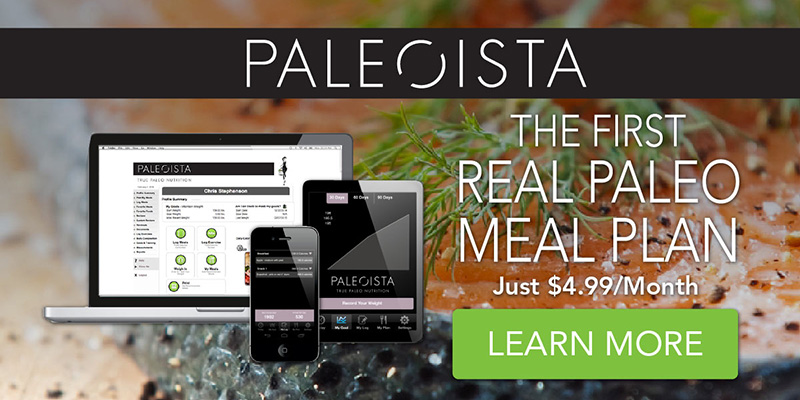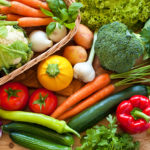Your Paleo Guide to Summer Veggies
During the off season, if you happen to live in a snow covered climate, your choices for vegetables may be limited. But with summer in full swing, we’re spoiled with an abundance of fresh produce, making it an ideal time to get our veggie groove on and take the first step in the right direction for optimal Paleo health.
There’s no excuse to not include plenty of leafy greens, red ripe tomatoes, deep purple cabbages and brilliant yellow bell peppers. You see where I’m going with this: one way to ensure you’re getting all the variety you need is to go by color and, in an ideal world, every single color of the rainbow would grace your plate over the course of a day.
But how much is too much kale? And what if you just can’t find organic broccoli at the local grocery store? Knowing what’s in season in your neck of the woods comes in handy, so you can see what’s available and plan your menus accordingly. Planning plus creativity in your back pocket doubly set you up for success when you can easily swap one veggie for another or select a comparable fish when there isn’t wild salmon at the market.
The easiest way to know what’s in season is to simply make it a habit to get to know the local farmers and farmer’s markets. After a trip or two, you’ll begin to familiarize yourself with the vendor with the best zucchini and who sells the most amazing pastured pork from a mere 50 miles away.
Since the number of farmer’s markets across the country has nearly doubled in the last five years, from 4,685 in 2008 to 8,144 in 2013, according to the Department of Agriculture,1 your chances of locating one close to where you live is high.
If you haven’t seen a farmer’s market close to home, a great resource to check out is Local Harvest. With an online, nationwide directory of local farmer’s markets, CSA (Community Supported Agriculture) program listings, and an online delivery option, all bases are covered. They even offer a membership to your local food community through Local Harvest, which allows you to subscribe to their newsletter, track online orders, receive announcements about local farm events and online promotions, and write product reviews.
Admittedly, living in Southern California, I am fortunate enough to be able to pick and choose which one I’d like to frequent, but this certainly isn’t the case for everyone.
If a local farmer’s market isn’t an option, another great means of procuring fresh, local produce while supporting local economy is to join a CSA. These programs allow city residents to have direct access to high quality, fresh produce grown locally by regional farmers. When you become a member of a CSA, you’re purchasing a “share” of vegetables from a regional farmer. Unlike farmer’s markets, the government does not track CSAs, so there is no official count of how many CSAs there are in the U.S., but again, you can refer to Local Harvest for a guide on this, too.
Aside from the convenience of having a farm box delivered right to your door, saving you a trip (and reducing your carbon footprint), being a member of a CSA takes out all the guesswork. If you receive a box filled with kale, cabbage, carrots, Swiss chard and baby lettuce, guess which veggies you’ll be eating that week? It’s a total no brainer!
A third option to keep seasonal with your veggies, if neither the farmer’s market nor the CSA options fit your style, is to use an online guide to what’s in season, such as the one offered by Whole Foods’s Market. With an alphabetical listing of what’s in season and tips on easy prep methods, it’s another valuable resource to rely upon.
And, speaking of easy prep, when we’re talking veggies, not everyone enjoys a simple, raw kale salad or steamed broccoli all the time. Granted, both are indeed easy to prepare, healthy and oh-so-Paleo, but even they can get old, and too much of any one food, even if it is a veggie, isn’t a great idea.
Not only does your palate tire of it, but there can be potential health risks. For example, eating too much kale, which has goitrogenic properties, and can contribute to an enlarged thyroid. While these properties tend to dissipate when kale cooked,2 a better approach is to vary the veggies you’re eating.
Try including sea veggies which are high in iodine and can also help offset the risk of eating too many cruciferous vegetables.3 Once again, everything we need for our health, we can find in natural foods!
How to prepare veggies in an interesting manner that taste great, too, is one of the most common requests I get when I’m doing a cooking demo. My Cabbage “Noodles” are a fun way to prepare cabbage, and best yet, it’s a veggies that’s basically in season year round.
Eat it cold or eat it hot; just make sure to add some wild protein and a little extra fat to round out this delicious recipe!
REFERENCES
[1] “The Number of U.S. Farmers Markets Has Nearly Doubled in the Last Five Years.” Www.nationaljournal.com. N.p., n.d. Web. 30 June 2015.
[2] “Kale’s Dark Side: Could Cruciferous Vegetables Be Bad For You?” Medical Daily. N.p., 25 Jan. 2014. Web. 30 June 2015
[3] “About The Wahls Protocol.” Terry Wahls MD Defeating Progressive Multiple Sclerosis without Drugs MS Recovery Food As Medicine. N.p., n.d. Web. 30 June 2015





